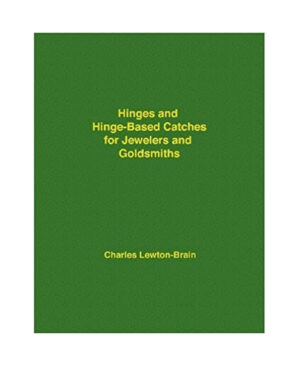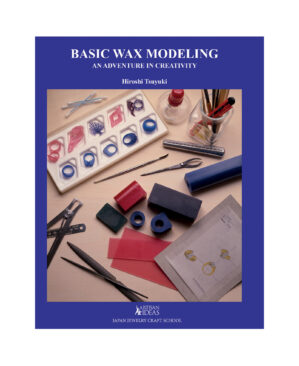Description
“Buy this Book!! – Mel Wolski, MAGazine.
“Once in a while a master takes time to record the tricks amassed during a lifetime, although among jewelers this is very rare.” – Alan Revere.
This is a loose, eclectic collection of short cuts, bench tricks and alternative equipment options for goldsmiths. Cheap tool making, conversions and unexpected sources for tools are all described. Sections include shop machines, tools, setting tools, soldering and more. Lots of drawings, lists and reviews of sources round out the book. A good table of contents and index make finding information easy. 80 pages. 82 line drawings.
Following are reviews of this book:
“Once in a while a master takes time to record the tricks amassed during a lifetime, although among jewelers this is very rare. Perhaps they are too busy. In any case, jewlers are notoriously secretive about how they do what they do and they are fearful of passing on their hard-eaned secrets. After 25 years as a goldsmith and educator, I am convinced that vast quanities of tricks and techniques have been buried with the goldsmiths who use them.
But here comes Charles Lewton-Brain, a recognized master craftsman, opening his private notebook of tricks in order to save his colleagues, present and future, countless hours at the bench. Actually, Charles has made a career of researching, developing and sharing practical information for jewelers. And over the past few years he has spent those long winter nights in Calgary writing down what he knows about shortcuts, tools and special techniques. The result is this collection of nearly 500 tips and tricks, any one of which is worth the price of the book.
Organizing his storehouse of knowledge by tool and procedure, Lewton-Brain presents the avid jewelry worker with some real gems of information. Some are classical, yet heretofore unrecorded, tips such as recycling old files into scrapers, burnishers and punches. Some are his own, like using a small spray bottle of water to quench charcoal blocks after soldering, in order to extend their life.
Some tips are credited to other sources, like Doug Zaruba’s use of stretchy latex pulled over a small or awkward piece of metal to hold it in place while hammering. And some are just suggestions to try yourself, like mounting a carbide ‘flint’ wheel from a disposable lighter onto a screw-top mandrel, as a freebie bur.
This unique book offers some great information, like using separating discs to score metal, making polishing laps out of cardboard and filing the very tip of your chuck key into the mini-screwdriver you can never seem to find when you need one.But my favorite is mounting a baby-food jar lid beneath a hole in your catch pan, then using various jars to catch and separate your filings.
With an emphasis on content rather than appearance, the simple, low-tech presentation of the book is hardly a problem for the brainful of information within.” – Review by Alan Revere, Jewelers Circular Keystone.
“Buy this book!!! Cheap Thrills works on many different levels. Firstly and most obviously it is a bench reference. Something to refer to when unsure of a technique or tool usage and procedure. But it is a more than a simple how to or recipe book.
Cheap Thrills subtly works as a gentle reminder of the basic reasoning we choose to work. Work should be enjoyable, work should be interesting, work should be profitable. Reading Cheap Thrills provides opportunity to uncover, discover and recover perspective of invention and curiousity that sometimes gets misplaced.
Charles seems to realize in presenting this book that is through exploring, inventive techniques and curious thought one can increase productivity (and hopefully profit) and expand the range of potential designs accessable to them.
Thirdly, Cheap Thrills works as an interesting read. In the introduction, Charles provides one person’s answer to a lifetime of trouble free soldering. On page 10 is an emergency pickle solution worthy of McGyver or James Bond. From time to time Charles tells tales of a potential maiming or mishap to keep it exciting. One should read the conditions of the book on page 2 should they doubt his seriousness.
To test this book I lent it out to other people. Paul Zichuk, a Toronto stone setter, Mike Smiley (Modern Renaissance Jewellery), and Shaun Booth (Booth-Wilkins Goldsmith of Barrie). We all found the book useful and all had different favourite parts. We all agreed it could use more pictures and more Canadian suppliers. Considering the range of our fields of work, the years of experience and difference of our jewelley such acceptance of his book was remarkable. I’m glad my copy arrived prior to setting up my new studio.” – Review by Mel Wolski in MAGazine.













